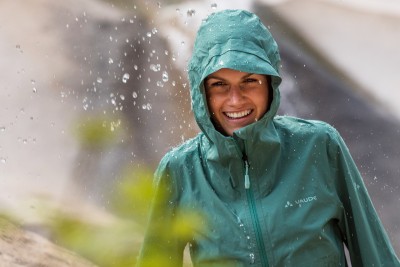Contents
The water column (or hydrostatic head) indicates how waterproof fabrics are. This measurement is particularly important for outdoor and rain clothing or tents. But what does this specification really mean and how high does it have to be to be protected from moisture?
How is the hydrostatic head determined?
To test how waterproof fabrics are, an empty water cylinder is placed on the fabric and filled with 100 mm of water every 60 seconds. The filling quantity, at which 3 drops of liquid penetrate the fabric, indicates the maximum water column. This value, found out during the hydrostatic water pressure test, is the guide value for waterproofness.
How high does the hydrostatic head have to be?

What else should you pay attention to?
Besides the membrane itself, the coating is also an important factor. In order to maintain the stability of the fabric in the long term, a good quality coating and proper care is important.
Absolute watertightness can only be ensured by good workmanship. Seams in waterproof clothing or tents must be specially processed to prevent water from penetrating through the stitch holes. At the same time zippers are either protected with a cover strip or welded or glued.





